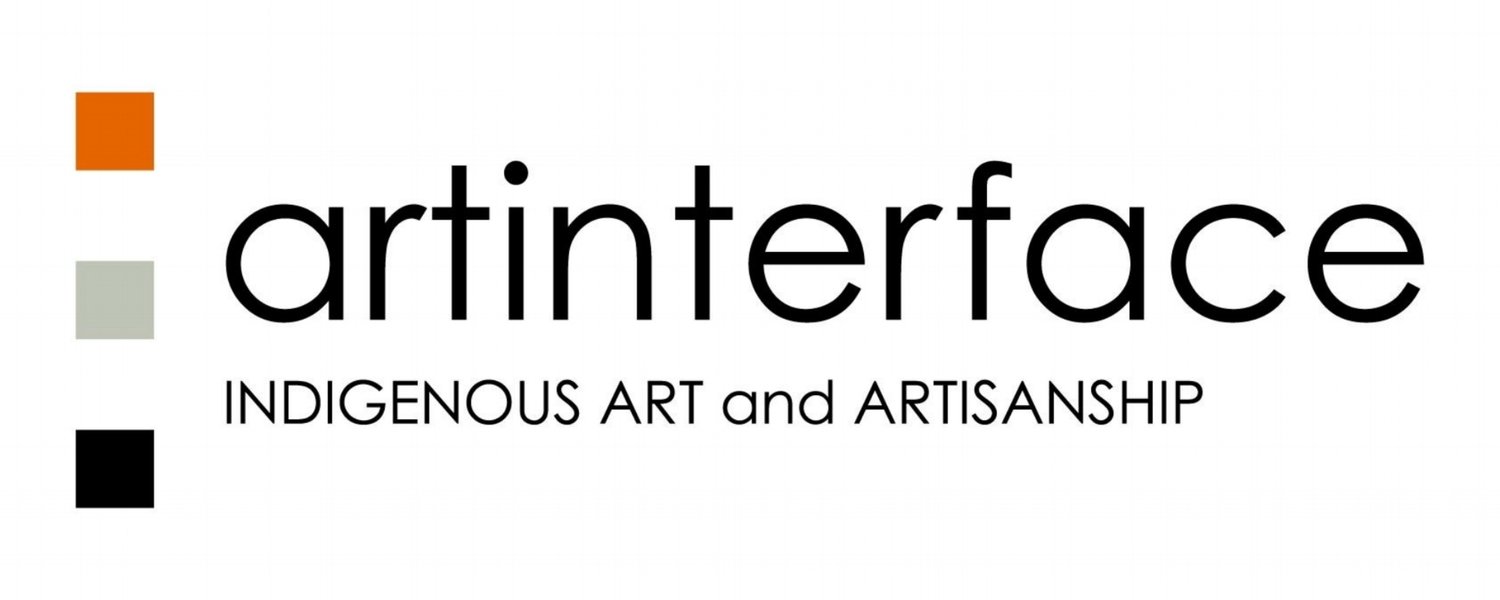Mina Mina Jukurrpa - Mina Mina Dreaming by Julie Nangala Robertson
Mina Mina Jukurrpa - Mina Mina Dreaming by Julie Nangala Robertson
Julie Nangala Robertson
61 x 46cm
Acrylic on Canvas (unstretched)
Image © Julie Nangala Robertson
Copyright of the artwork and text remains with the artist and Aboriginal traditional owners, is administered on their behalf and reproduced here with permission from Warlukurlangu Artists Aboriginal Corporation.
The Artist:
Julie Nangala Robertson, also known as Robinson, was born in Yuendumu in 1973 and is one of five daughters of the renowned artist, Dorothy Napangardi, winner of the 2001 Telstra National Aboriginal and Torres Strait Islander Art Awards. Since the late 1990’s, often alongside her gifted mother, Julie has cultivated a unique artistic style that intertwines experimental techniques with ancient storytelling. Julie Nangala Robertson herself winning the 2023 Telstra National Aboriginal and Torres Strait Islander Art General Painting Award for her artwork Mina Mina 2022.
Her artwork features minimalist and contemporary representations of her ancestral land, Pirlinyanu, characterised by its rugged terrain and abundant water springs near Mina Mina, located in the remote areas west of Yuendumu in the Northern Territory. Julie has transcended traditional motifs, forging her own distinct visual vocabulary, establishing herself as an innovative and compelling artist to follow.
Descriptive:
Mina Mina is an extremely important ceremonial site for Napangardi and Napanangka women that is located approximately 600kms west of Yuendumu, just east of Lake Mackay and the Western Australian border. Mina Mina has a ‘marluri’ (salt lake or clay pan) that is usually dry, without water. There are also a number ‘mulju’ (soakages), Sandhills, and a large stand of ‘kurrkara’ (desert oaks [Allocasuarina decaisneana]). The Mina Mina Jukurrpa is an important source of Warlpiri ritual knowledge and social organization, particularly relating to the different roles performed by men and women.
The ‘kirda’ (owners) of this country are Napangardi/Napanangka women and Japangardi/Japanangka men, who can depict portions of the Mina Mina Jukurrpa in their paintings. The artist’s mother, Dorothy Napangardi (c. 1956-2013) painted Mina Mina and has passed down her Jukurrpa stories to her children and asked them to continue to paint for her. There are a number of different components of the Mina Mina Jukurrpa; artists usually choose to depict one particular aspect. These can include ‘kanta’ (women), ‘karlangu’ (digging sticks), ‘majardi’ (hair string skirts/tassels), ngalyipi (snake vine [Tinospora smilacinal]), ‘jintiparnta’ (desert truffle [Elderia arenivaga]), and ‘kurrkara’ (desert oak [Allocasuarina decaisneana]).
In ancestral times, a group of ‘karnta’ (women) traveled from Mina Mina on an epic journey to the east. These ancestral women danced at Mina Mina and ‘karlangu’ (digging sticks) rose up out of the ground. They collected these digging sticks and started traveling to the east. They carried their digging sticks over their shoulders and they were adorned with ‘majardi’ (hair string belts), white feathers, and necklaces made from ‘yinirnti’ (bean tree [Erythrina vespertilio]) seeds.
They traveled east from Mina Mina, dancing, digging for bush tuckers, and creating many places as they went. As they went east, they passed through Kimayi ( a stand of ‘kurrkara’ desert oak). They passed through Sandhills country where ‘Yarra’ (bush potato or ‘big yam’ [Ipomea costata]) ancestors from Yumurrpa and ‘ngarlajiya (pencil yam or ‘small yam’ [Vigna lanceolata]) ancestors from Yumurrpa were engaged in a huge battle over women. This battle is also very important Warlpiri Jukurrpa narrative. The women went on to Janyinki and stopped at Wakakurrku (Mala Bore), where they stuck their digging sticks in the ground.
These digging sticks turned into mulga trees which still grow at Wakakurrku today. These digging sticks women then went on to Lungkardajarra (Rich Bore) where they looked back towards their country in the west and started to feel homesick for what they had left behind. The women split up at Lungkardajarra. Some of them traveled eastwards to Yarungkanyi (Mount Doreen) and kept going east. They passed through Coniston in Anmatyerre country and then went on to Alcott and Aileron and beyond. The other group of women traveled northwards from Lungkardajarra to Karntakurlangu. These women stopped at Karntakurlangu to did for ‘warapi’ (sand monitor/goanna [Varanus gouldii]) and ‘jintiparnta’ (desert truffle) before going further north. Both groups eventually got so homesick for their desert oak country in the west that they went all the way back to Mina Mina where they stayed for good. The dots in this painting represent the women’s as they walked and dance across the country.
COLLECTIONS :
Kluge-Ruhe Aboriginal Collection, University of Virginia, U.S.A
Musée des Confluences, Lyon, France
Edith Cowan University, Perth, Australia
Flinders University Art Museum, Adelaide, Australia
Dr Arthur Bridge Collection, Sydney, Australia

